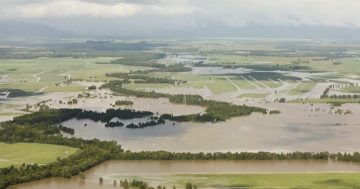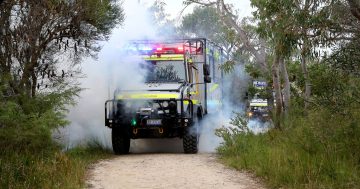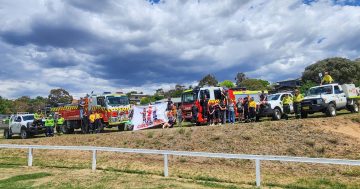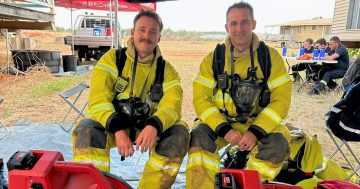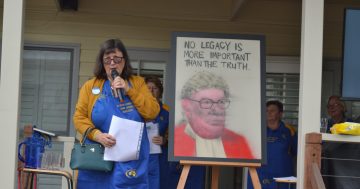Rebecca Cairns* says rats with tiny backpacks, searching though the ruins of collapsed buildings, could one day be life-savers.
 Buildings don’t collapse very often — but when they do, it’s catastrophic for those trapped inside.
Buildings don’t collapse very often — but when they do, it’s catastrophic for those trapped inside.
Natural disasters like earthquakes and hurricanes can level entire communities, and for the search-and-rescue teams trying to find survivors, it’s a painstaking task.
However, unlikely saviours are being trained up to help — rats.
The project, by Belgian non-profit organisation APOPO, is kitting out rodents with tiny, high-tech backpacks to help first responders search for survivors among rubble in disaster zones.
Behavioural Research Scientist, Donna Kean who leads the project, says rats are typically quite curious and like to explore “and that is the key for search and rescue”.
“In addition to their adventurous spirit, their small size and excellent sense of smell make rats perfect for locating things in tight spaces,” Kean says.
While the rodents are still in the early stages of training, APOPO is collaborating with the Eindhoven University of Technology to develop a backpack, which is equipped with a video camera, two-way microphone, and location transmitter to help first responders communicate with survivors.
APOPO has been training dogs and rats at its base in Tanzania in the scent detection of landmines and tuberculosis for more than a decade.
Its programs use African Giant Pouched Rats, which have a longer lifespan in captivity of around eight years compared to the four years of the common brown rat.
While the search-and-rescue project only officially launched in April 2021, APOPO had been trying to get the idea off the ground for years but lacked funding.
Volunteer search-and-rescue organisation, GEA approached APOPO in 2017 about the possibility of using rats in its missions.
A key component to the mission was the technology to allow first responders to communicate with victims via the rats.
APOPO didn’t have this — until electrical engineer, Sander Verdiesen got involved.
Verdiesen was tasked with creating the first prototype of the rat backpack to help rescuers get a better idea of what was going on inside disaster zones.
It consisted of a 3D-printed plastic container with a video camera that sent live footage to a receiver module on a laptop, while also saving a high-quality version on an SD card.
It attached to the rats with a neoprene vest, the same material that’s used for scuba suits.
Verdiesen flew to Tanzania to test out the equipment and said that initially, the rats “didn’t really know how to deal with it” but adapted quickly.
“By the end, they were just running around with the backpack on, no problem at all,” he said.
Sizing down technology and adapting it for disaster zones hasn’t been easy.
GPS can’t penetrate the dense rubble and debris of collapsed buildings, says Verdiesen, but an alternative is the Inertial Measurement Unit, a location tracker used in the heels of firefighters’ boots.
“If you’re walking, your foot is going to be still every step or so – that’s where you can recalibrate. With the rats, we’re yet to find that,” he says.
Other engineers are working on similar projects, so he’s hopeful they can find a solution.
Verdiesen is also trying to pack more technology into the next backpack version, such as a two-way microphone, while reducing its size.
“The rats were walking up against something that they would normally be able to go under, and suddenly they couldn’t anymore,” he said.
To make it as small as possible without losing any functionality, Verdiesen plans to integrate everything onto a single printed circuit board, which will free up more space.
This upgraded version of the backpack should be ready later this year, and he hopes one day it can help first responders “to locate somebody that would otherwise not be rescued”.
Handled from birth, the rats are exposed to a variety of environments, sights, sounds and people as part of a habituation process, which makes their gradual exposure to more extreme situations less stressful.
As animals are at the centre of APOPO’s projects and missions, welfare is a priority.
The animals are trained in 15-minute sessions five days a week, and live alone or with same-sex siblings in home cages, which is also where they live out their days once they retire from working life.
Eating a diet of fresh fruit and vegetables, they also get daily playtime in a custom-built playroom — although, Kean says for the search-and-rescue rats, training is very similar, “just with a little bit of direction”.
The program is still in development, and Kean estimates it will take at least nine-to-12 months to train each rat.
Once the rats are confident in more complex environments, the project will move to Turkey, where GEA is based, for further preparation in more realistic environments.
If that goes well, then the rats would potentially enter real-life situations.
*Rebecca Cairns is a writer for CNN International based in Hong Kong.
This article first appeared on the CNN website.



